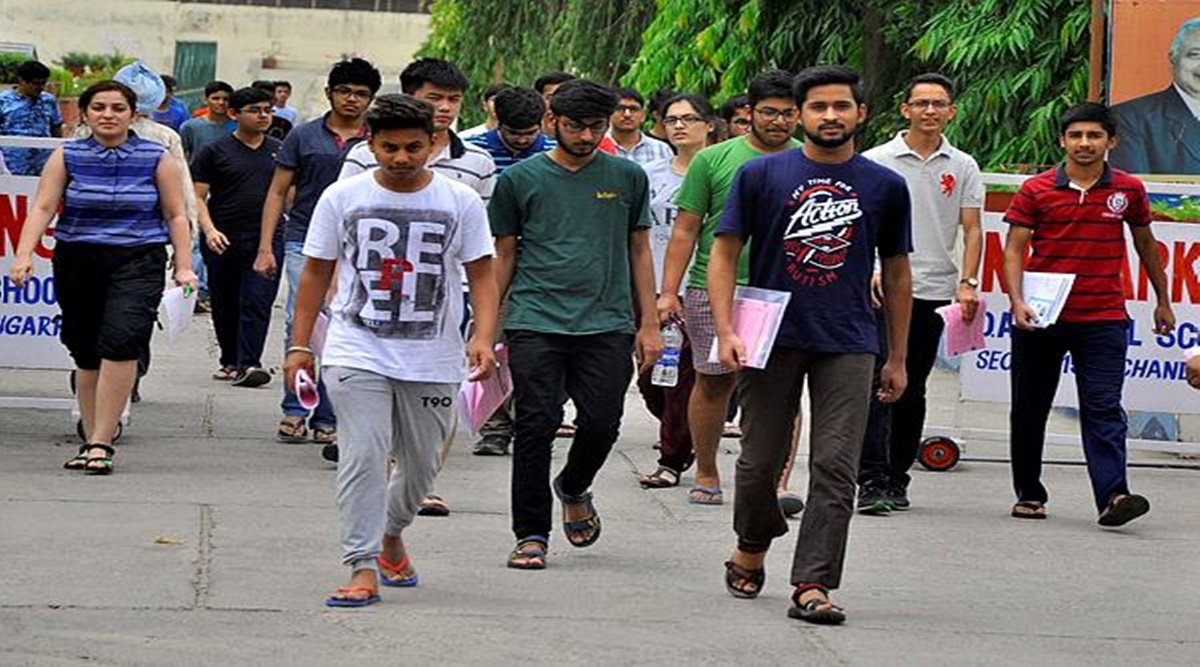 There are many ways to enter a B-school, which one is best for you (Express Photo by Sahil Walia/Representational)
There are many ways to enter a B-school, which one is best for you (Express Photo by Sahil Walia/Representational)— Written by Kedar Joshi
An MBA is one of the most sought-after courses by Indian students. A student who is looking for a career in the corporate world has a lot of institutes and many entrance gateways to choose from. The B-schools also understand that aspirants are looking for a career fillip and focus on the same aspects during selection. They look for career-oriented candidates who have the right attitude and aptitude. The aspirants’ aptitude is evaluated through the entrance exam. The attitude is evaluated through GD and personal interview (PI). B-schools also look for good communication skills. Many good b-schools also prefer candidates with work experience to bring diversity of experience in the classroom.
Common entrance exams include CMAT (Common Management Admission Test), MAT (Management Aptitude Test), Xavier Aptitude Test (XAT), and Common Aptitude Test (CAT). Often, aspirants wonder about which is a better option to choose. These exams have coverage like language comprehension, data analysis and sufficiency, intelligence and critical reasoning, and general knowledge or environment (Indian/Global only in MAT and XAT). Due to COVID-19, all these exams are being conducted in online mode only.
The CAT is one of the most common entrance exams for admissions to B-schools. In the CAT, the correct technique combined with a bit of training will guarantee you a decent percentile. XAT is known to be a bit more demanding than CAT, while MAT is relatively simpler than both. However, scores of all these exams are announced as percentile scores. Depending on the number of candidates appeared in CAT, XAT and MAT the percentile interpretation varies.
The CAT score is now used by over 100 colleges to select candidates. A strong CAT score is a passport to India’s top B- schools, including premium institutions – IIMs. XAT is handled for admission to XLRI Jamshedpur, and 150 other XAMI members. If you cannot appear and make to the business schools who accept CAT, XAT and MAT then aspirants can appear for state-level entrance exams such MH-CET or KMAT 2020.
The attitude component mainly consists of achievement orientation (being open to challenges), flexibility (ready for new opportunities), and comprehensiveness (ability to understand different aspects of the event). The interviewers will evaluate achievement orientation by probing the aspirants on their past achievements. Aspirants should be clear and lucid about these events. They should convince the interviewers by bringing out the facts and challenges faced. Aspirants should strictly avoid bluffing or try passing meagre achievements as big ones. Flexibility is evaluated in the interview in the same manner.
Specialisation is important but is now a hygiene factor for career development. Aspirants need to be comprehensive in their approach. They should have an understanding of all aspects of an event and should be able to incorporate these while taking a decision. The Group discussion is actually aimed at evaluating comprehensiveness. Aspirants should try bringing different aspects of the event in their discussion. They should not only state facts but also analyse the event which reflects the aspirant’s understanding. This skill is built by the continuous reading of news editorials rather than focusing on news headlines.
Written communication skills will be evaluated during the entrance exam but some schools will also conduct an additional test. Verbal communication (listening and speaking) are evaluated during GD and PI. Most importantly aspirants should not confuse communication skills with grammatical proficiency. The communication skills evaluation is context based and the best way of impressing the evaluators is by being aware of the current affairs.
— The author is chairman admissions, TAPMI Manipal.